
Roche Abbey is a now-ruined abbey in the civil parish of Maltby, Rotherham, South Yorkshire, England. It is in the valley of Maltby Dyke, known locally as Maltby Beck, and is administered by English Heritage. It is a scheduled monument and Grade II* listed in the National Register of Historic Parks and Gardens.
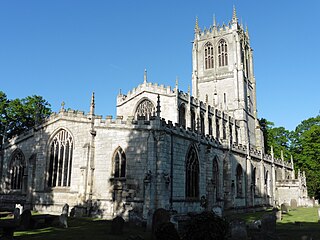
Tickhill is a market town and civil parish in the City of Doncaster, South Yorkshire, England, close to the border with Nottinghamshire. At the 2001 census it had a population of 5,301, reducing to 5,228 at the 2011 Census.
Upton is a village in south-west Warwickshire, England. It is just off the A46, between Alcester and Stratford-upon-Avon, about a mile east of Alcester.

Wickersley is a village and civil parish in the Metropolitan Borough of Rotherham in South Yorkshire, England, situated 3 miles (5 km) from the centre of Rotherham. The area is very near to road junctions for the M1, M18 and A1(M). It is home to the secondary school and sixth form, Wickersley School and Sports College.

The history of Ireland from 1169–1536 covers the period from the arrival of the Cambro-Normans to the reign of Henry VIII of England, who made himself King of Ireland. After the Norman invasion of 1169–1171, Ireland was under an alternating level of control from Norman lords and the King of England. Previously, Ireland had seen intermittent warfare between provincial kingdoms over the position of High King. This situation was transformed by intervention in these conflicts by Norman mercenaries and later the English crown. After their successful conquest of England, the Normans turned their attention to Ireland. Ireland was made a lordship of the King of England and much of its land was seized by Norman barons. With time, Hiberno-Norman rule shrank to a territory known as the Pale, stretching from Dublin to Dundalk. The Hiberno-Norman lords elsewhere in the country became Gaelicised and integrated in Gaelic society.
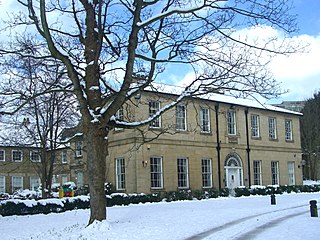
Broom Hall is a historic house in the City of Sheffield, England that gives its name to the surrounding Broomhall district of the city. The earliest part of the house is timber-framed; it has been tree-ring dated to c1498, and was built by the de Wickersley family, whose ancestral home was at Wickersley. The de Wickersley family descended from Richard FitzTurgis, who co-founded Roche Abbey in South Yorkshire. The de Wickersley family later dropped their Norman name (FitzTurgis) in favour of the village they controlled.
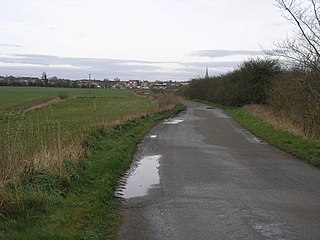
Laughton en le Morthen is a village and civil parish in the Metropolitan Borough of Rotherham lying to the south of Rotherham, South Yorkshire, England, and its main attraction is the All Saints Church with its tower and spire of 185 feet. The village had a population of 1,241 at the 2011 Census. The parish also includes the hamlets of Carr, Slade Hooton and Brookhouse.
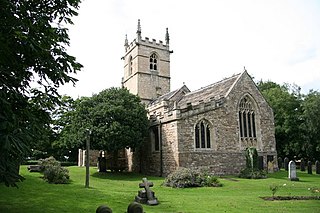
St James' Church, High Melton is a parish church of the Church of England in High Melton, South Yorkshire, England.
Pickburn is a hamlet in South Yorkshire, England, close to the village of Brodsworth and Brodsworth Hall.
Roger de Busli was a Norman baron who participated in the conquest of England in 1066.

The A631 is a road running from Sheffield, South Yorkshire to Louth, Lincolnshire in England. It passes through the counties of South Yorkshire, Nottinghamshire and Lincolnshire. The road has many towns on its route including Rotherham, Maltby, Gainsborough and Market Rasen. It is mostly single road throughout its length but has some stretches of dual carriageway as well.

Levett is a surname of Anglo-Norman origin, deriving from [de] Livet, which is held particularly by families and individuals resident in England and British Commonwealth territories.

Sir Thomas Gargrave (1495–1579) was an English Knight who served as High Sheriff of Yorkshire in 1565 and 1569. His principal residence was at Nostell Priory, one of many grants of land that Gargrave secured during his lifetime. He was Speaker of the House of Commons and vice president of the Council of the North.
Thomas Levett, was an Oxford-educated Lincoln's Inn barrister, judge of the Admiralty for the Northern Counties and High Sheriff of Rutland. But Levett's chief accomplishment was as antiquarian, preserving a centuries-old chartulary kept by Cluniac monks at their Pontefract, Yorkshire abbey, and then turning it over to Yorkshire medieval scholar Roger Dodsworth for publication.
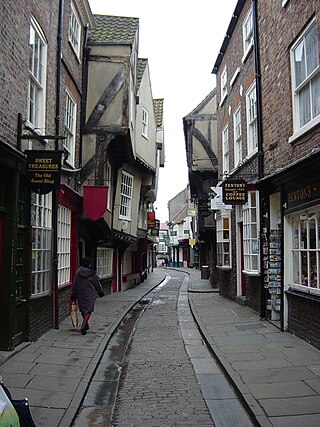
Percival Levett (1560–1625) was an early merchant and innkeeper of York, England, Sheriff of the city, member of the Eastland Company and father of English explorer Capt. Christopher Levett.

Gilbert de Lyvet was an early Anglo-Norman nobleman and merchant who became one of the earliest Mayors of Dublin. He donated extensive properties to the Cathedral of the Holy Trinity in Dublin, acted as witness for early gifts to the cathedral, and was a partisan for the Bigods, the de Clares, the de Lacys and other Norman magnates.
Rev. Ralph Levett was an English Anglican minister who served as domestic chaplain to an aristocratic family from Lincolnshire with Puritan sympathies, who subsequently installed him as rector of a local parish. A graduate of Christ's College, Cambridge, where he became a protégé of the prominent Puritan minister John Cotton, Levett later married the sister of the wife of his friend Rev. John Wheelwright, another well-known early Puritan settler of New England.

William Levett was lord of the manor of the South Yorkshire village of Hooton Levitt, a village named in part for his ancestors, and became the owner of the patronage of Roche Abbey on marriage to the granddaughter of the Abbey's cofounder Richard FitzTurgis, a Norman baron who co-founded Roche with the great-nephew of one of England's most powerful Norman barons, Roger de Busli.
William Levett may refer to:














